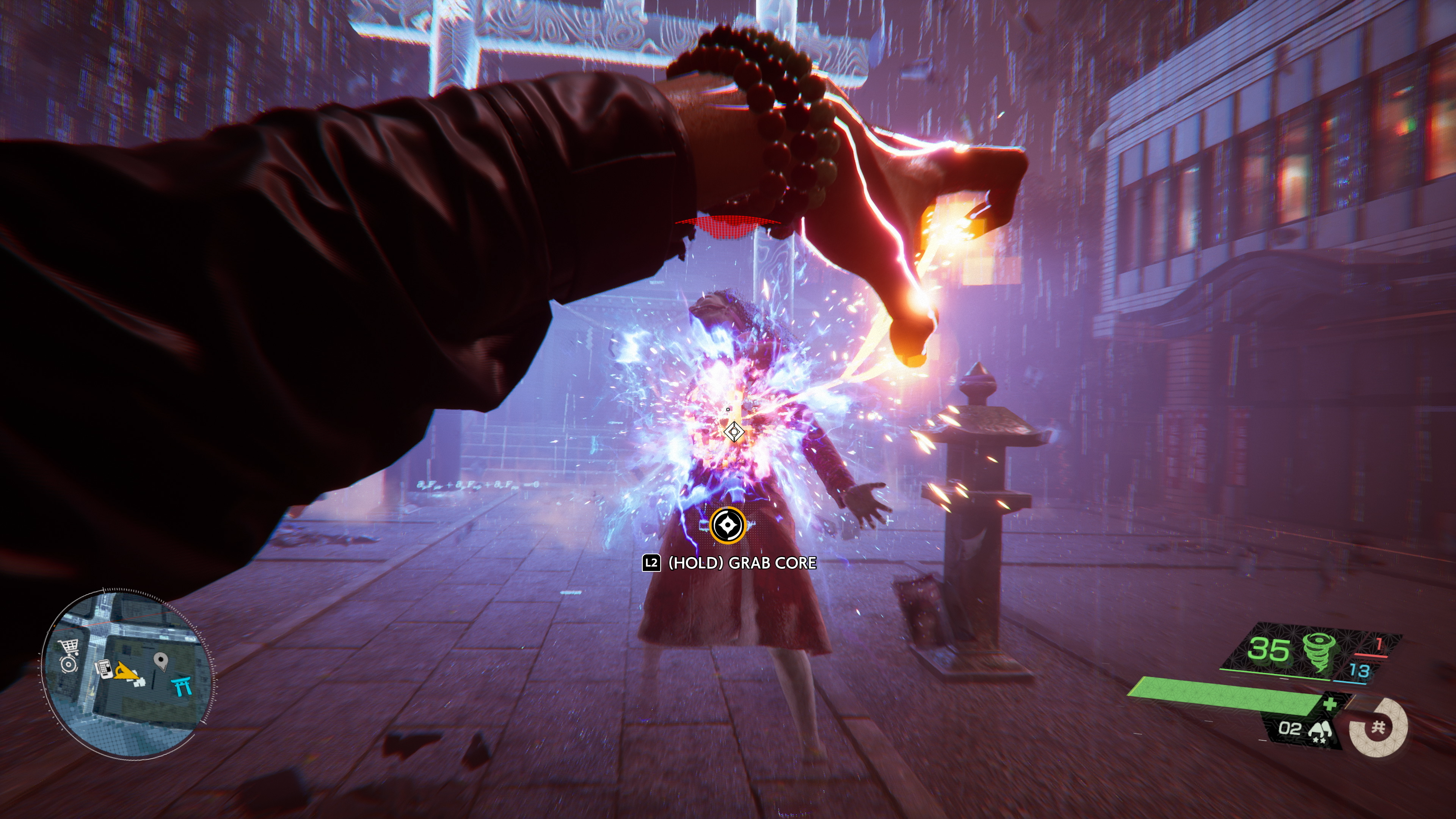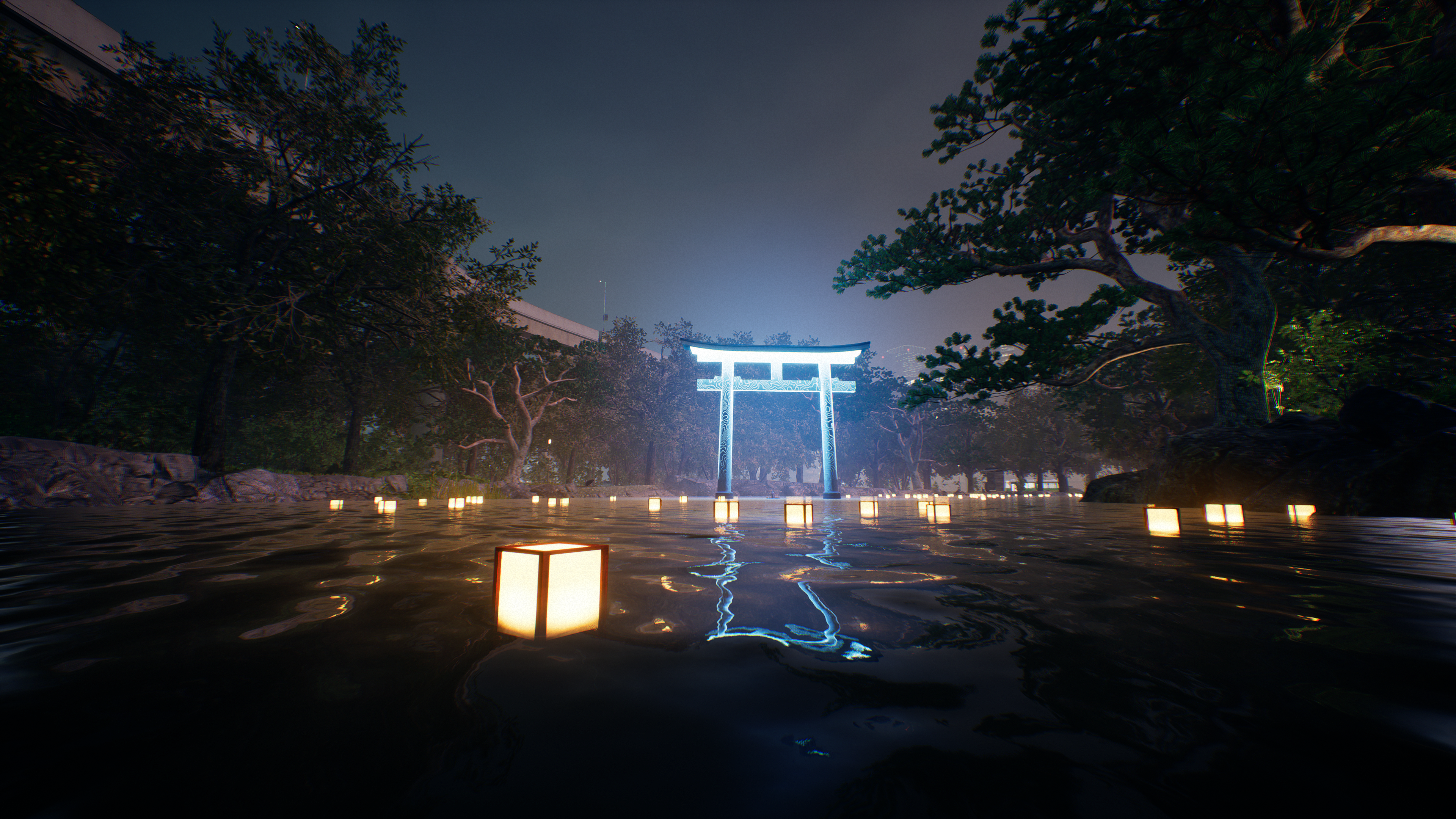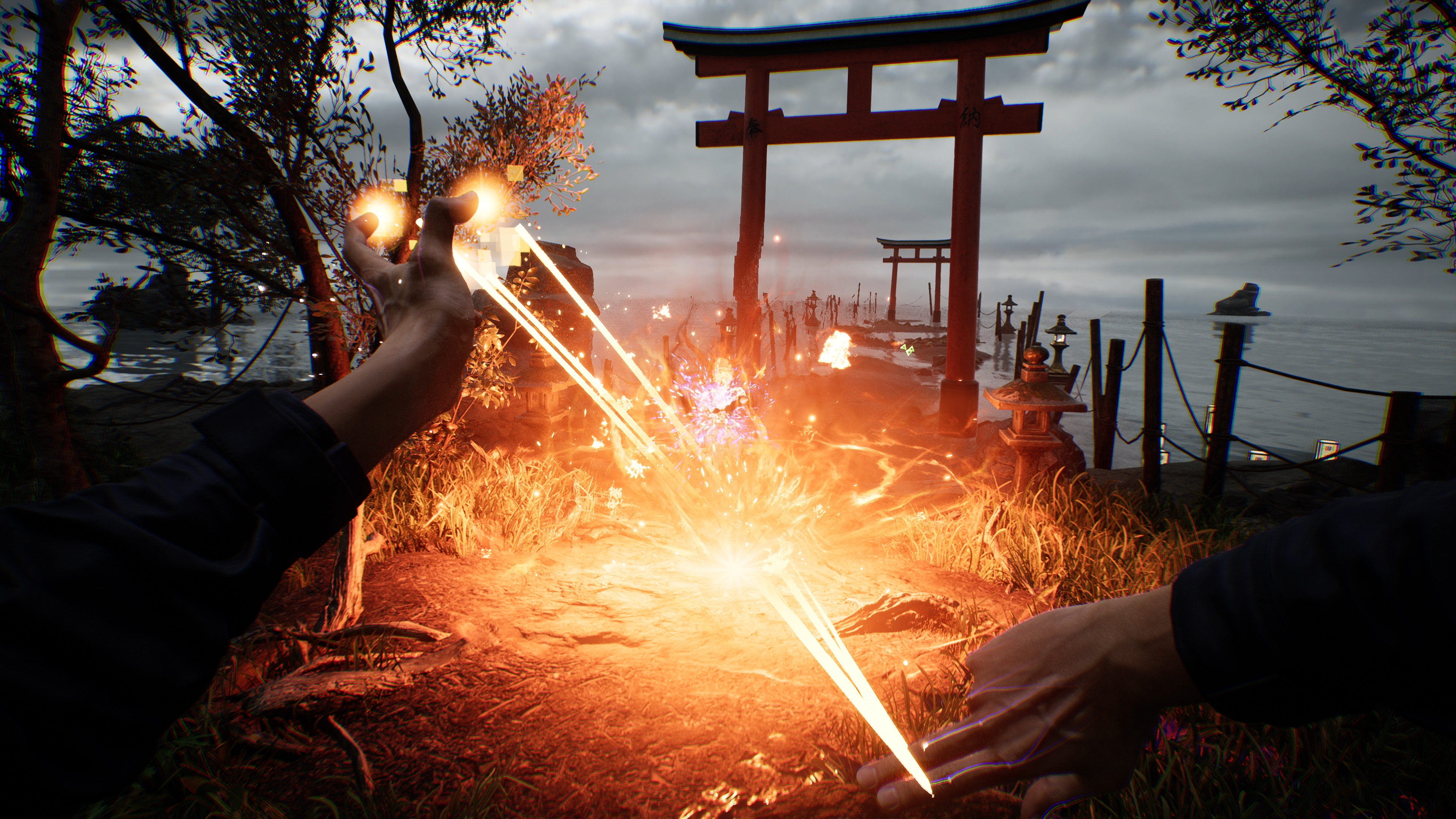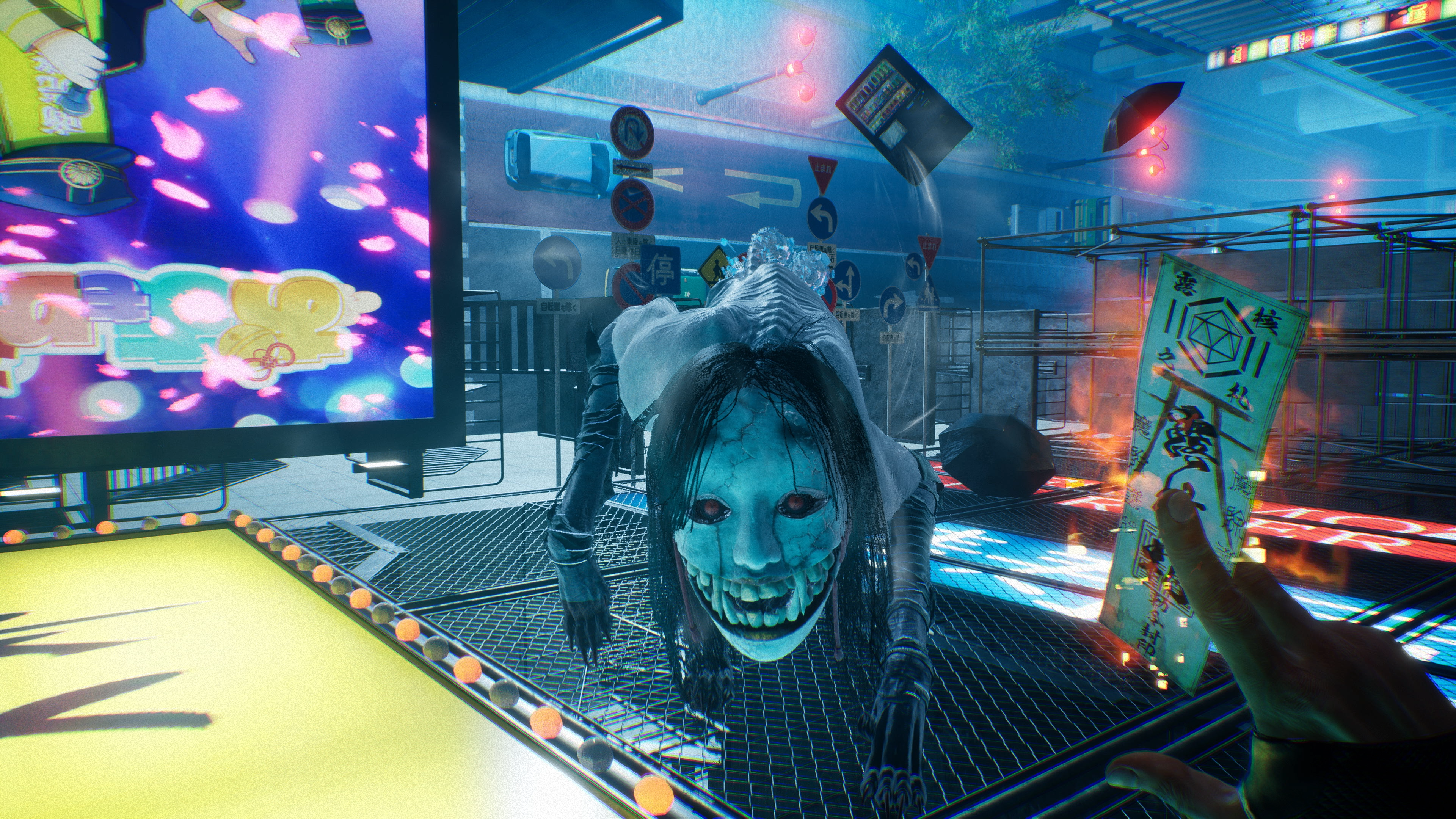Tango Gameworks is keen for Ghostwire Tokyo to abandon the survival horror label the studio has held for so long. The Evil Within and its sequel were clear homages to the likes of Resident Evil and Silent Hill, while this spooky foray into Japan’s capital is unlike anything I’ve ever played before with a nuanced focus on original ideas both visual and mechanical.
It’s gorgeous, stylish, impactful, and unpredictable in ways that few games are nowadays. From the opening moments it is clear that the Japanese studio wanted to craft something new, a narrative adventure that is equal parts first-person shooter and psychological thriller. I don’t want to veer too much into hyperbole, but to say Ghostwire Tokyo is one of the most original triple-A blockbusters in several years would be an understatement.
After roaring through the opening two chapters, I’m already prepared to see everything else this vision of Tokyo has to offer, whether it be through showdowns with unstoppable Yokai or poignant side missions that involve infiltrating a haunted apartment and freeing it from a corrupt curse, helping its troubled inhabitants in their stilted journey to the afterlife. While its open world design can veer into derivative waters at points, there is more than enough wonder across its dimly lit streets to keep you enthralled.
You play as Akito, a laughably unfortunate millennial who finds himself meeting death on the Shibuya Crossing just as the city is being overrun by a supernatural mist. This coming fog erases every human being in its path, turning them into invisible spirits as all manner of corrupt creatures begin to call the capital home. Known simply as ‘Visitors’ these enemies take the form of faceless salarymen, headless schoolgirls, and floating cloaked figures that roam Tokyo like it now belongs to them, seeking to eliminate any living things that cross their path. Except cats and dogs, they’re pretty chill with animals it turns out.
Luckily for Akito, a rogue spirit known as KK decides to inhabit his freshly baked corpse, bringing him back to life and imbuing him with all manner of psychic powers. It soon becomes clear that Tokyo is being taken over by a group of supernatural rebels who have murdered thousands and intend to stretch that number to millions if their plans succeed. Your job is to stop them and save your ill sister, who for reasons unknown has been kidnapped and roped into an evil plan that could see all of Japan brought to ruin.
The storytelling isn’t particularly strong thus far. It’s well presented and acted, but the core emotional thrust feels diluted and poorly explained, like Ghostwire Tokyo was so excited to give us control that it forgot to establish its own foundations. Before we even know who our protagonist is or where he came from we’re thrust into the action and taught the basics of Ethereal Weaving – a means of combat that has Akito firing a mixture of wind, ice, fire, and a string of spirit energy to banish Yokai from the mortal realm. The game’s lacking narrative soon became an afterthought because the moment-to-moment gameplay had my attention immediately, providing a spin on first-person shooter mechanics that are so refreshing it almost feels liberating. I can safely say you’ve never played anything like it.
Instead of physical weapons – except for a bow you’ll obtain to perform stealth attacks – all of Akito’s arsenal comes from his own flexible digits. He’ll thrust his hand forward to deliver a deadly gust of wind, while joining his fists together to burst forth an explosion of flame. Fingers move like they’re performing a delicate jutsu dance, immaculately orchestrated to draw on powers from a world far beyond our own. Even with such a focus on extravagance you don’t feel overpowered, the majority of enemies capable of lunging themselves towards you or dealing damage from afar.
Perfect blocks can provide temporary buffs as you whittle down a foe’s health, unveiling their inner core that can be pulled away with a chaotic unleash of spiritual strings. It’s hard to describe, but it has the mechanical satisfaction of hurling Kratos’ Leviathan Axe in God of War or executing a flawless parry in Elden Ring. There’s just something about it that feels incredible no matter how many times you do it. Stealth is equally satisfying whether you’re using the aforementioned bow or sneaking directly behind enemies to dig your fist into their chest in search of a wayward soul. Ghostwire Tokyo’s core mechanics are simple, yet the upgrade paths provide more than enough flexibility to expand your skill set and feel more and more powerful as the campaign progresses. I ain’t afraid of no ghost.
While the combat is engaging, it’s in the exploration of the titular city where Ghostwire really comes to life. Tango Gameworks has immaculately recreated huge stretches of Central Tokyo ranging from the labyrinthine streets of Shibuya to the sombre shrines and picturesque parks surrounding Tokyo Tower. The narrative setup is that the city centre has been overrun by evil spirits, and your goal is to prevent this isolated incident from becoming a much larger one by taking over Torii Shrines and wiping out big players involved in the wider scheme. Having been to Japan a couple of times in reality it was eerie to see such bustling streets now abandoned with piles of clothes, stray pets, and crashed vehicles the only signs of an existence that was snatched away in an instant. Rifling around in the aftermath is infinitely fascinating as I took the opportunity to pilfer through convenience stores and untouched apartments in search of small nuggets of storytelling and an idea of what this city’s populace was doing when everything was suddenly left behind.
Ghostwire’s world is so amazing because it seeks to mimic reality, holding up a mirror to our own environment and seeking to interpret it so differently. Tango Gameworks hopes to shine a light on the darker alleys that nobody would dare venture down, or the domestic situations that are doomed to silence until spirits with nothing to lose can finally spew forth their pent-up feelings. Such moments come to light in the game’s many side quests. While you’ll find all manner of generic collectibles spread across Tokyo, these missions are micro-narratives that are at times heartfelt and mysterious, offering incentive to seek them out thanks to worthwhile rewards like new character skins and accessories. Whenever my map was suddenly littered with icons I didn’t feel a sense of exhaustion, but one of curious excitement as I abandoned the main mission in favour of something else entirely.
Tokyo also has a surprising level of verticality to its exploration. In the early hours you gain the ability to latch onto creatures that roam the sky, essentially acting as grapple points to land upon rooftops and survey the city from above. This is where many of the game’s spirits are found, floating blue forms that can be absorbed and turned into phone boxes across the open world in exchange for experience points. It feels like weeaboo Crackdown, with movement being so fun that the mere act of seeking out these little collectibles is a joy in itself. When moving around Tokyo is such a breeze I never felt compelled to use fast travel or find shortcuts, because stopping to fight ghosts or investigate a potential secret always felt worthwhile. It’s dense and devoid of fluff, which is a testament to its quality.
I can’t wait to talk about my full experience with Ghostwire Tokyo because there is so much to delve into. But from the opening chapters alone, aside from its lightweight narrative, Ghostwire Tokyo has crafted a first-person delight that isn’t afraid to abandon genre conventions and strive for something new. In a medium continually driven by recycled ideas and predictable sequels, to see a new IP like this executed with such flawless style is a rare sight, and one we should do everything in our power to savour.
Source: Read Full Article



